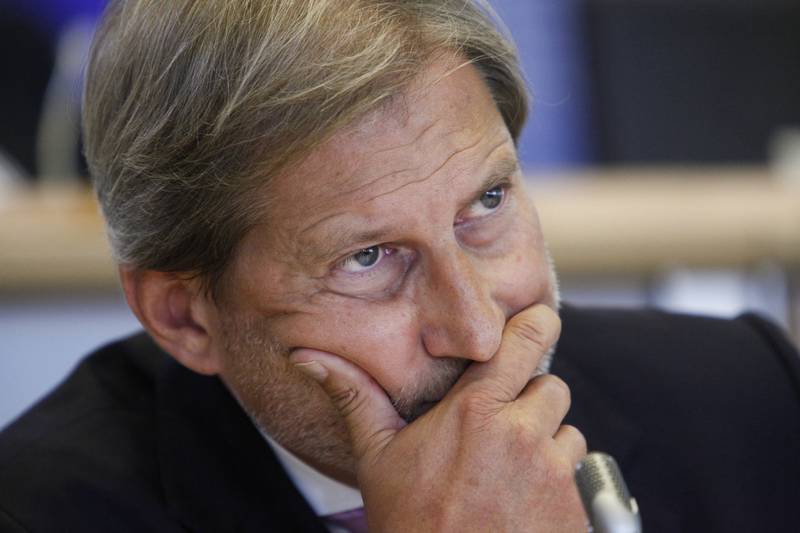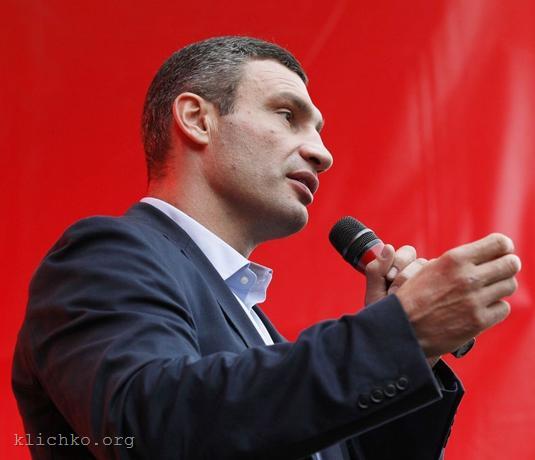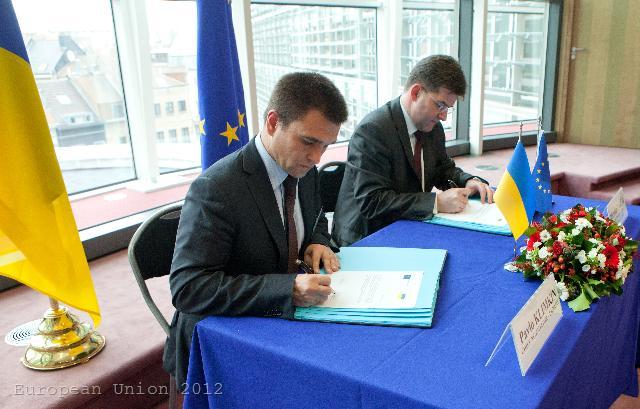EU’s Eastern Partnership - East of Europe, West of Russia
Irena Mihaylova, September 14, 2011
 The initiative of the European Union for political and economic rapprochement with the six former Soviet republics - Armenia, Azerbaijan, Belarus, Georgia, Moldova and Ukraine - will be revived at a forthcoming summit, scheduled for the 29th and 30th of September, under the auspices of the Polish EU Presidency. The so-called Eastern Partnership comes back on the agenda of European leaders after two years of a standstill, during which the focus of Europe was directed entirely at overcoming the global financial and economic crisis, the crisis in the euro area and the Arab Spring.
The initiative of the European Union for political and economic rapprochement with the six former Soviet republics - Armenia, Azerbaijan, Belarus, Georgia, Moldova and Ukraine - will be revived at a forthcoming summit, scheduled for the 29th and 30th of September, under the auspices of the Polish EU Presidency. The so-called Eastern Partnership comes back on the agenda of European leaders after two years of a standstill, during which the focus of Europe was directed entirely at overcoming the global financial and economic crisis, the crisis in the euro area and the Arab Spring.
These large-scale turbulences within Europe and beyond should be considered in a broader context, including the EU’s immediate neighbourhood in Eastern Europe and South Caucasus as part of the European Neighbourhood Policy. It is about time for Europe to assess the Eastern Partnership, to take account of the achievements and the shortcomings of the policy and reaffirm the common goals between the EU and the six. Although the meeting was scheduled to take place much earlier, given the busy EU calendar, it has been constantly delayed. Finally, a meeting was scheduled to take place last spring by the Hungarian Presidency but was again postponed until this year’s steady decision for a September summit.
EU and the six
Armenia, Azerbaijan, Belarus, Georgia, Moldova and Ukraine are different in their political, economic and geographical specifics but they are all united in their common history in the shadow of the Soviet Union and its totalitarian heritage. Healing the Soviet past has proven difficult and slow at present times. From a historical perspective, after the final collapse of the Soviet Union in 1991, Europe became a legal political alternative for all countries that stood behind the Iron Curtain, including the six post-soviet states.
In 1993 the EU committed to a concrete promise for future membership of those Central and Eastern Europe countries that met the high criteria of Western democracy and economic liberalisation. In 2004, the Europeans under the heading "front runners" became EU members first, in 2007 the slower reformers, categorised as “backlaggers” - Bulgarians and Romanians, were also accepted. For the six former Soviet republics, however, the promise of a future EU membership is still missing.
In the case of the Eastern Partnership, the European Union appears again as a patron of western democratic values promoted by similar legal instruments of "soft power", "shaming " and "carrot and stick" /financial assistance and sanctions/, applied to the countries of Central and Eastern Europe, but with considerably less vigour, no big promises and a much later start. The EU signed agreements for partnership and cooperation with Eastern Europe and South Caucasus after the mid-nineties. Subsequently, these partnerships have been united under the umbrella of the Neighbourhood Policy of the EU in 2004. A few years later the European Neighbourhood Policy has been expanded to include new initiatives - the Union for the Mediterranean /re-signed in Paris, July 2008/ and the Eastern Partnership /Prague, May 2009/.
As a text, the relatively new initiative of the Eastern Partnership sounds quite ambitious with the idea for real democratic reforms; functioning civil society and laws; respect for human rights; transparent government; a real market economy and sustainable development of the six post-Soviet states. In reality, its achievements in the region are controversial. The policy is based on the so called “Action Plans” built accordingly to the characteristics of each of the participants, the European Neighbourhood Partnership Instrument /ENPI/, as well as appropriate mechanisms for assessing progress on the reforms in Armenia, Azerbaijan, Belarus, Georgia, Moldova and Ukraine based on EU’s conditions.
Europe's promises are set forth in the revised Neighbourhood Policy under the slogan "more for more" or - more democratic and liberal reforms for more advantages in trade and visa regimes with the EU, as well as increased financial support for the national, cultural, research and civil institutions of the countries.
However, pragmatically speaking, the overall objectives of the EU and its Eastern partners are political and energy security, mobility, integration of transport and energy networks, a common market and sustainable development. Unsurprisingly, the factor much responsible for success or failure, balances or imbalances in the European Neighbourhood Policy is Russia. After the historic transformation of 1991 and the collapse of the USSR, the country is still characterised as the opposite of the European values for democratic governance, but is also deemed a strategic partner of the Union, when it comes to pragmatism and, in particular, energy cooperation and trade of raw materials.
Moscow's attitude towards the Eastern European initiative is as controversial as is EU’s approach towards Russia. The initial reaction of Russian Foreign Minister Sergey Lavrov was to accuse the EU of blackmailing and exercising political pressure on Belarus, the country which otherwise would have supported the recognition of South Ossetia's and Abkhazia's independence, following the military conflict in 2008, when Russia invaded with its army the Georgian territory. However, several days after his speech, the Russian minister preferred a more pragmatic stance by stating that the possibility of Russia's participation in the Eastern Partnership programme should not be ruled out.
Russia and the six
In its management of the Eastern Partnership, the EU has been continually led by the difficult relations with Russia, which is particularly sensitive to its “near abroad”, as the country still refers to its neighbours. That is precisely why the relationship between Moscow and the six post-soviet states is so decisive. In March last year, Russia was surprisingly betrayed in the Georgian conflict by the country, which traditionally has a strong connection with Kremlin and to this day is still not a member of the Council of Europe - Belarus.
Despite Belarus’ gesture to the EU to refrain from recognising the independence of the disputed territories, seceded from Georgia with the Russian military intervention, the authoritarian regime of President Lukashenko is in strong dissonance with the Charter of Human Rights. The EU, except for its frequent criticism for the lack of democracy, human rights and freedoms in the country, has decided on visa bans for the Belorussian political elite and President Lukashenko himself in 2006, due to the violent repression of the regime against its political opponents. The visa bans have been reaffirmed by Brussels in January 2011 after the authorities in Belarus violently broke up the protests against the fourth victory of Lukashenko in the December 2010 elections.
Despite the diplomatic scandal, Belarus remains a key factor for EU’s energy policy as a fifth of the Russian gas to Europe passes through its territory. From this perspective Belarus can afford to circumvent EU rules but also to manoeuvre against Russia. The other smouldering conflict, raging from the early nineties in the region, is between Armenia and Azerbaijan over the disputed territory of Nagorno-Karabakh. Despite Armenia’s victory in '94, the violent feud between the two countries is far from over. In 2010, Azerbaijani President Ilham Aliyev has threatened with a new war the Armenians in at least nine of his speeches, wrote The Economist in March, and the conflict after its "end" has taken the lives of another 3,000 victims.
The EU is a crucial factor for stability in the region as it has agreed in 2006 with Azerbaijan, the richest country in Southern Caucasus with significant deposits of natural gas and oil, a Memorandum of Understanding for energy cooperation.
Unlike Azerbaijan and Belarus, the states with a more "European" orientation are Georgia, Armenia, Moldova and Ukraine. The four are considered more or less democratic and their relations with the EU report evolution and deepening of the integration process - the plans are to establish a deep and comprehensive free trade area and liberalisation of visa regimes with the EU in the near future.
Ukraine is also a key actor regarding the stability sought by the EU in the region since a large part of the Russian pipelines to Europe pass through its territory. The country has almost successfully reached a relatively high degree of European integration. However, the last presidential elections, won by Viktor Yanukovych, have again put Ukraine in a "floating" zone - east of Europe and west of Russia. In April, the Ukrainian President warmed up relations with Kremlin after the gas crisis of 2009, by allowing the Russian side to keep a fleet on the Crimean Peninsula until the year of 2042 in exchange of cheaper gas.
The arrest of Yulia Tymoshenko and the non-transparent process against the former pro-European Prime Minister of Ukraine have led to Europe’s critique. Recent events in Ukraine, considered the "best performer" in European integration, however, show how fragile the political balance is and how unpredictably the wind blows to the east of Europe. With the upcoming revival of the Eastern Partnership under the auspices of Poland, which as a neighbour is strongly interested in the political stability, sustainable development and integration of region with the EU, we will be expecting with curiosity the evaluation of the Eastern dimension of the European Neighbourhood Policy and the positions of European leaders regarding Europe’s East. A region as important as what is happening in the South.
euinside will follow the summit between the EU and the Eastern Partnership countries in a special subject that we will soon open. We will provide you with various opinions on the occasion of the meeting in the upcoming days and weeks.
 Johannes Hahn | © European Parliament
Johannes Hahn | © European Parliament | © klichko.org
| © klichko.org | © European Union 2012
| © European Union 2012